by Matt Meyer, Minnesota Department of Natural Resources
Many groundwater professionals have seen or worked with large-diameter production wells at some point in their career… wells that are 12-inches, 16-inches, or even 24-inches in diameter. But wells this size pale in comparison to a Ranney collector well that was recently sealed at Pine Bend Bluffs Scientific and Natural Area (SNA) in Inver Grove Heights, MN.
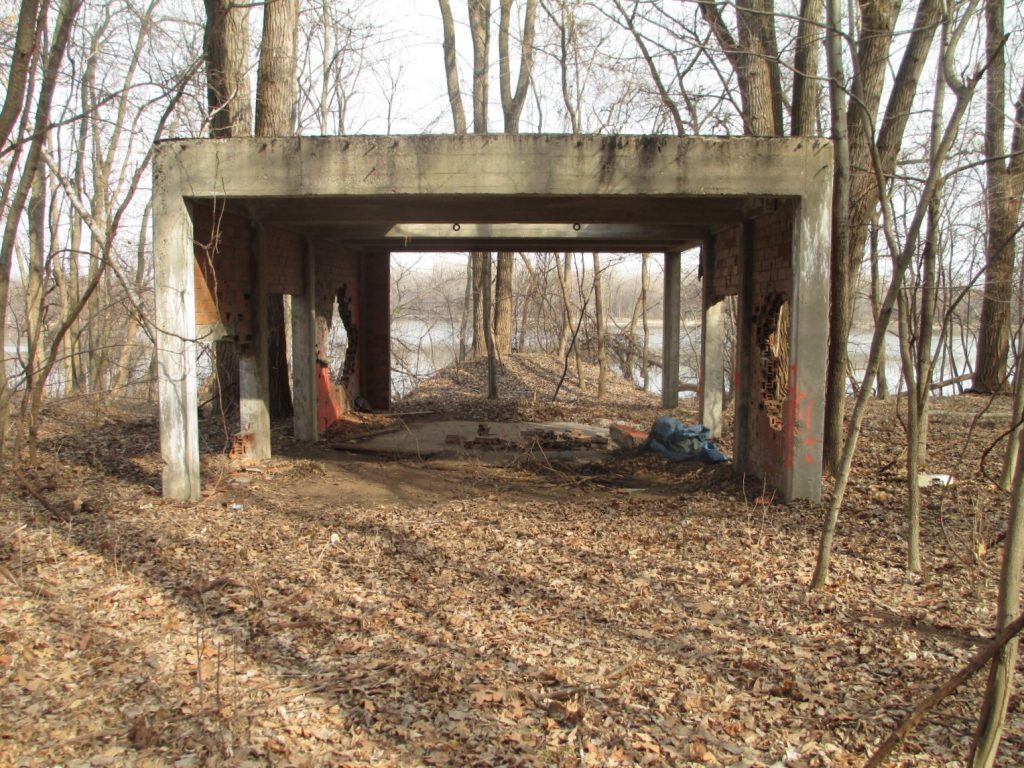
Photo of the Ranney well site. The well is covered with an at-grade concrete lid, located within this dilapidated concrete structure. The Mississippi River is in the background.
The Minnesota Department of Natural Resources (MN DNR) hired a contractor in Spring 2024 to seal a 13-foot diameter by 112-feet deep Ranney collector well that had been unused for decades. To make the project even more interesting, the well was located along the bottom of a steep Mississippi River bluff along the shore of the river and was not accessible by vehicle. The entire project was done via barge.
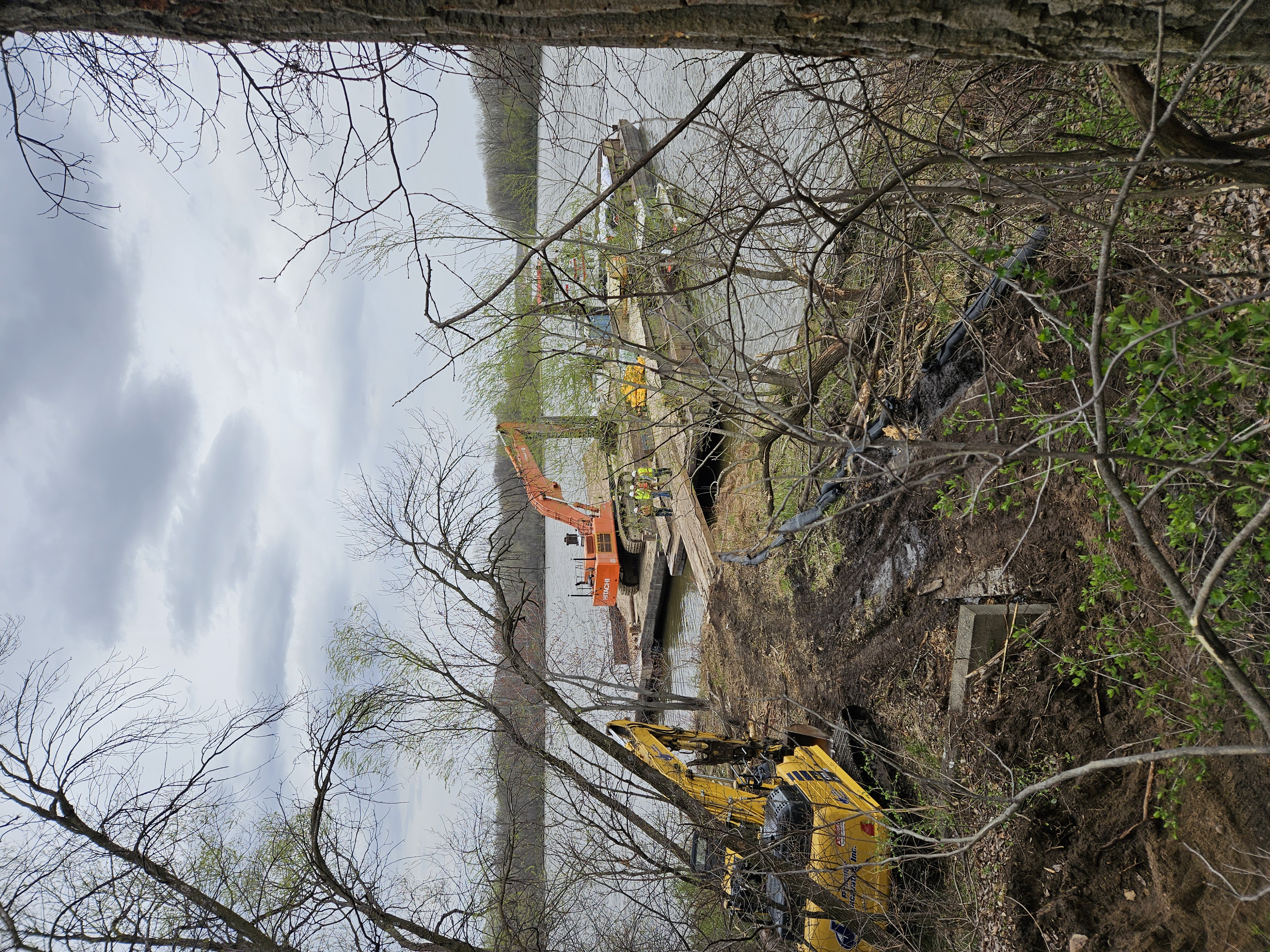
Photo of the barge setup used to haul equipment and supplies to and from the well site.
The well was built in 1943 as a potential water supply well for World War II munitions manufacturing. However, the war ended shortly thereafter, and the well fell into disrepair. The well site returned to woodland, and the access road from the top of the bluff was lost. Eventually the MN DNR obtained ownership of the property (including the well) and created the SNA. The SNA is known for its steep rugged terrain and 200-foot high wooded bluffs that overlook the Mississippi River.
Once funding was obtained, Boulder Creek Incorporated and Terry Maher Well Drilling were hired to complete the project. After all necessary permits and variances were issued, a barge was loaded and mobilized to the site. The concrete structure was demolished and hauled away via barge. Several old, unused 6-inch diameter test wells located near the Ranney well were also cleaned out and sealed.
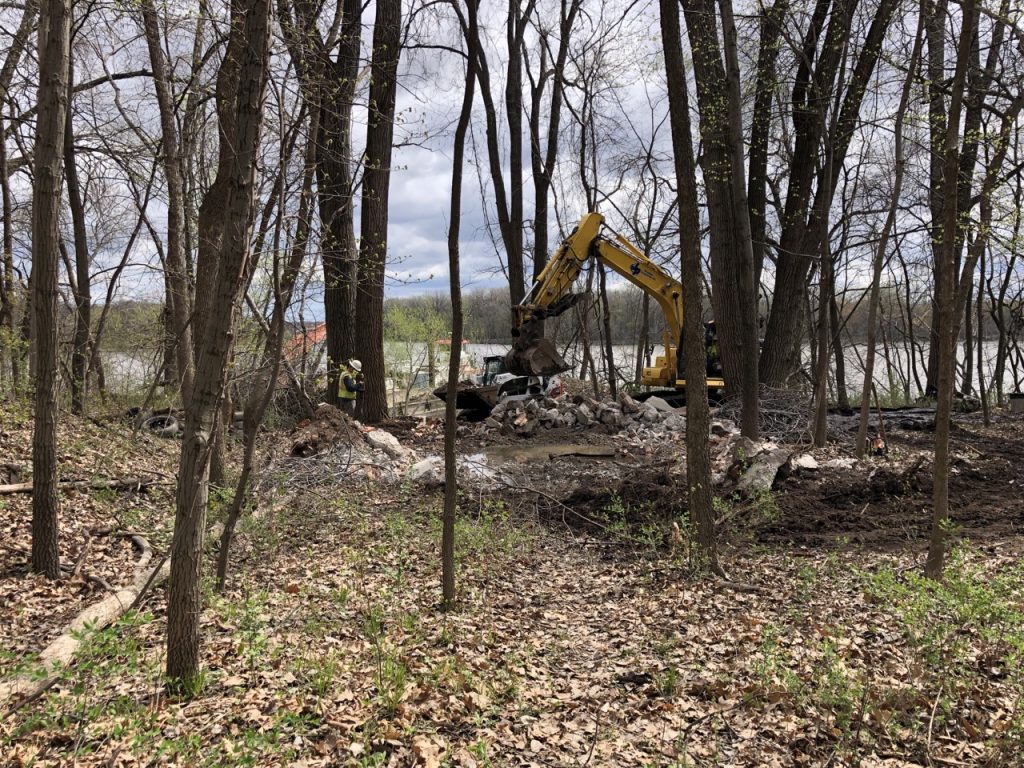
Photo of the demolished concrete structure. Since the site is an SNA, extra care was taken to limit the amount of trees removed during the project.
Next, the contractor placed a 10-foot lift of neat cement in the bottom of the well to seal off the radial screens at the bottom of the well. It took 66 super-sacks of neat cement. Each super-sack weighed 2,000 pounds.
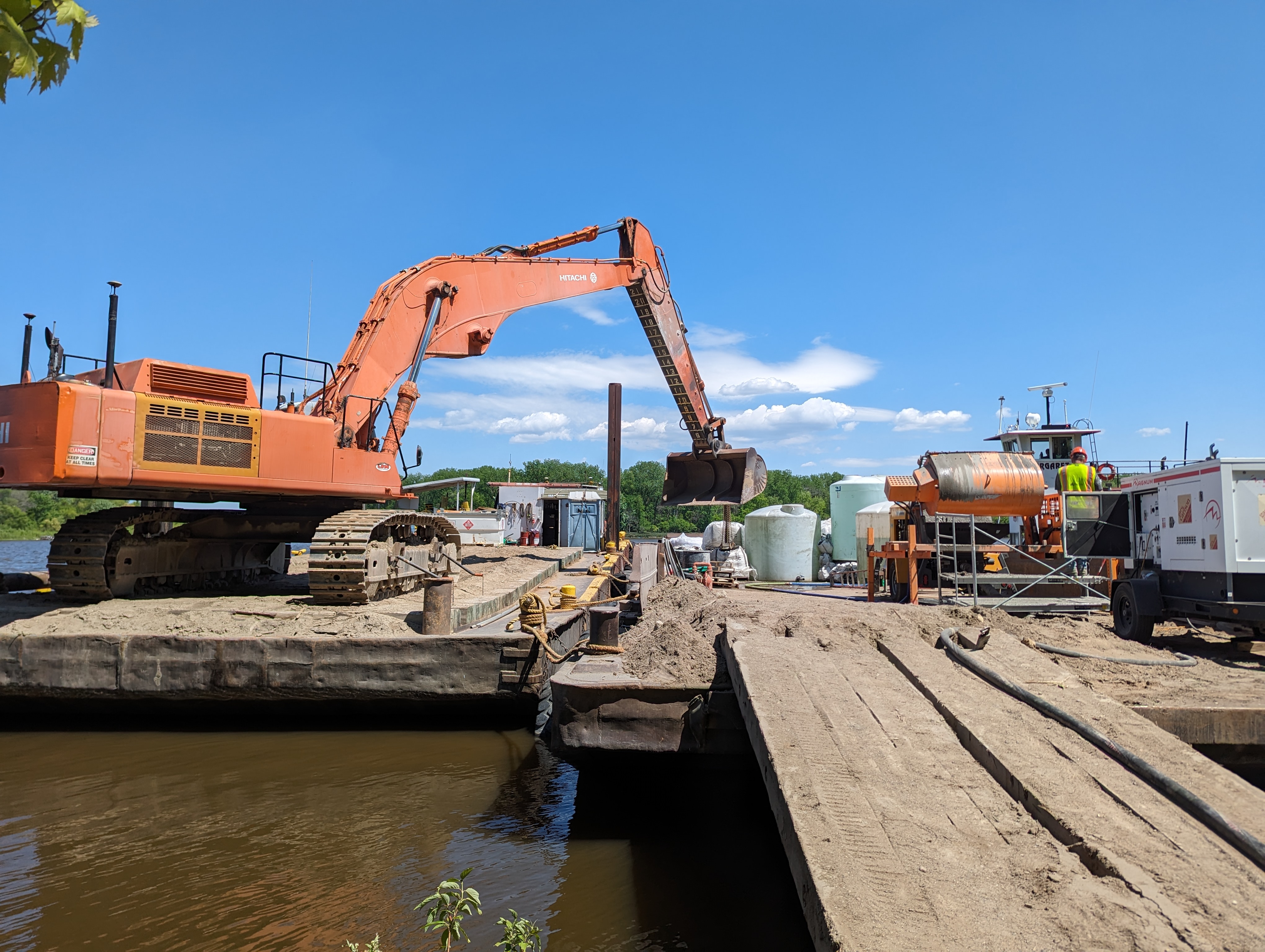
Photo of the cement mixer and pump setup on the barge. The neat cement was mixed on the barge and then pumped to the well site on shore.
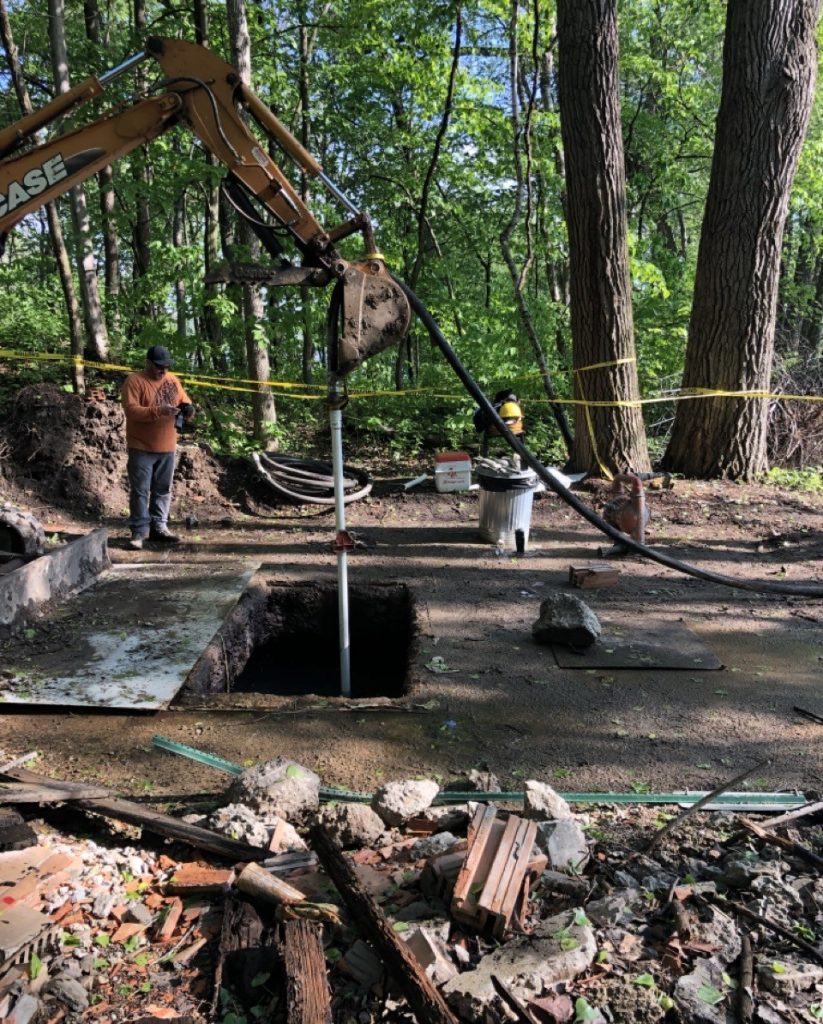
Photo of the neat cement being pumped into the bottom of the well. The contractors used a 2-inch diameter tremie pipe to place the neat cement.
After the neat cement was in place, the remainder of the well was filled with a mixture of granular bentonite and clean sand. It took 518 cubic yards of material to fill it up to ground level. Typically only bentonite or neat cement is allowed for well sealing in Minnesota, but due to the size of this particular well, a variance was granted to pour in the bentonite/sand mixture.
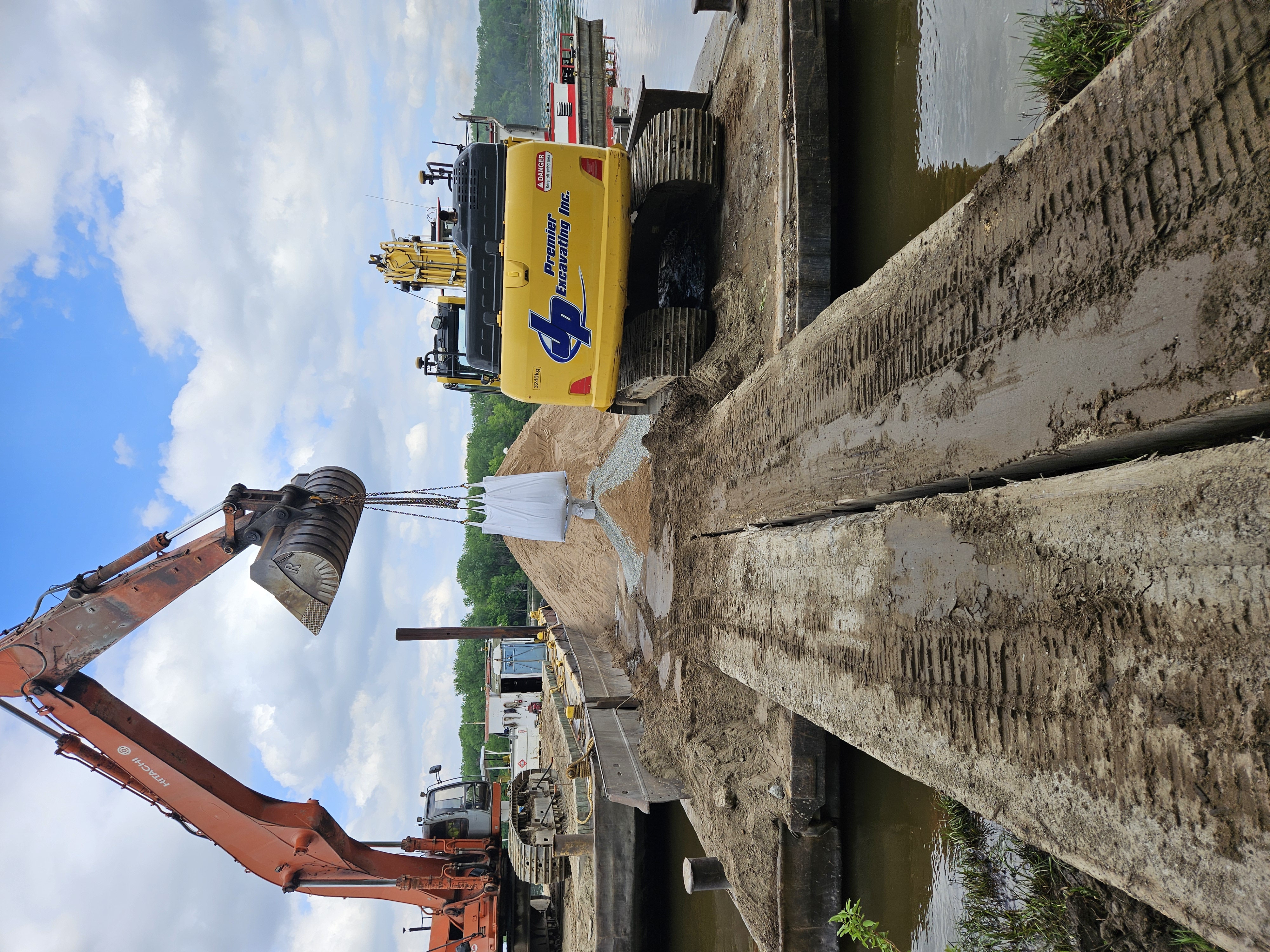
Photo of a super-sack of granular bentonite and sand getting mixed. They were mixed on the barge deck, then hauled up to the site and placed in the well.
Once the well was filled with the bentonite and sand mixture, the concrete lid on top of the well was demolished and the site was restored. Native plant seed was planted and erosion control blankets were placed on the ground. The project was completed by the end of May with a final cost of $771,664.75. The timing was fortuitous, because shortly after completion, heavy rains caused the Mississippi to rise well over flood stage, which would have added even more complications and delays to an already-complex and very unique project.
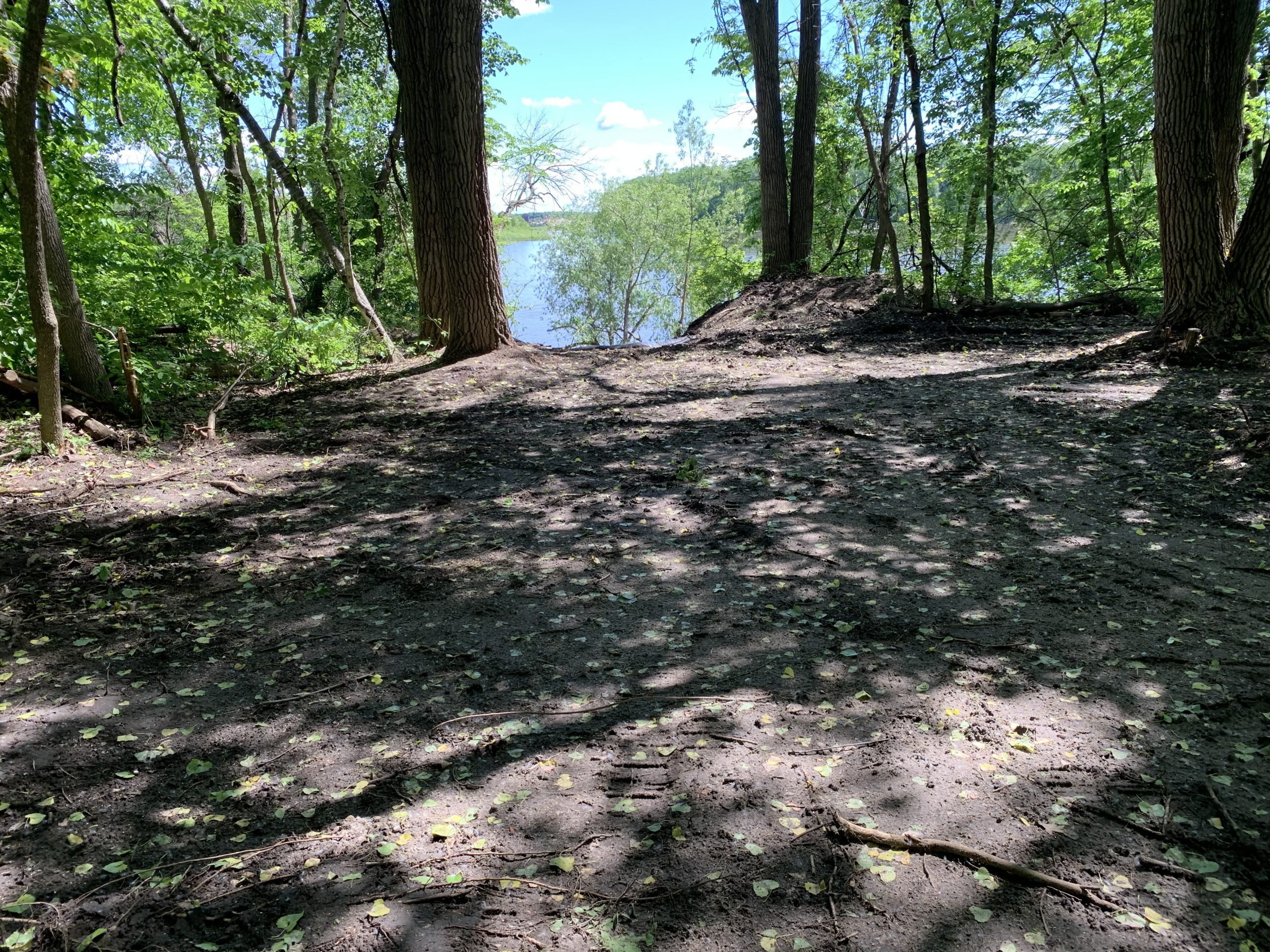
Photo of the Ranney well site after the well was sealed and the site restored.
MGWA is committed to developing a just, equitable, and inclusive groundwater community. Click on the button below to read MGWA’s full diversity statement.